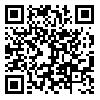BibTeX | RIS | EndNote | Medlars | ProCite | Reference Manager | RefWorks
Send citation to:
URL: http://mjiri.iums.ac.ir/article-1-3572-en.html
Background: EOS is a 2D/3D muscle skeletal diagnostic imaging system. The device has been developed to produce a high quality 2D, full body radiographs in standing, sitting and squatting positions. Three dimensional images can be reconstructed via sterEOS software. This Health Technology Assessment study aimed to investigate efficacy, effectiveness and cost-effectiveness of new emerged EOS imaging system in comparison with conventional x-ray radiographic techniques.
Methods: All cost and outcome data were assessed from Iran's Ministry of Health Perspective. Data for clinical effectiveness was extracted using a rigorous systematic review. As clinical outcomes the rate of x-ray emission and related quality of life were compared with Computed Radiography (CR) and Digital Radiography (DR). Standard costing method was conducted to find related direct medical costs. In order to examine robustness of the calculated Incremental Cost Effectiveness Ratios (ICERs) we used two-way sensitivity analysis. GDP Per capita of Islamic Republic of Iran (2012) adopted as cost-effectiveness threshold.
Results: Review of related literature highlighted the lack of rigorous evidence for clinical outcomes. Ultra low dose EOS imaging device is known as a safe intervention because of FDA, CE and CSA certificates. The rate of emitted X-ray was 2 to 18 fold lower for EOS compared to the conventional techniques (p<0.001). The Incremental Cost Effectiveness Ratio for EOS relative to CR calculated $50706 in baseline analysis (the first scenario) and $50714, $9446 respectively for the second and third scenarios. Considering the value of neither $42146 as upper limit, nor the first neither the second scenario could pass the cost-effectiveness threshold for Iran.
Conclusion: EOS imaging technique might not be considered as a cost-effective intervention in routine practice of health system, especially within in-patient wards. Scenario analysis shows that, only in an optimum condition such as lower assembling costs and higher utilization rates, the device can be recruited for research and therapeutic purposes in pediatric orthopedic centers.
| Rights and permissions | |
 |
This work is licensed under a Creative Commons Attribution-NonCommercial 4.0 International License. |





